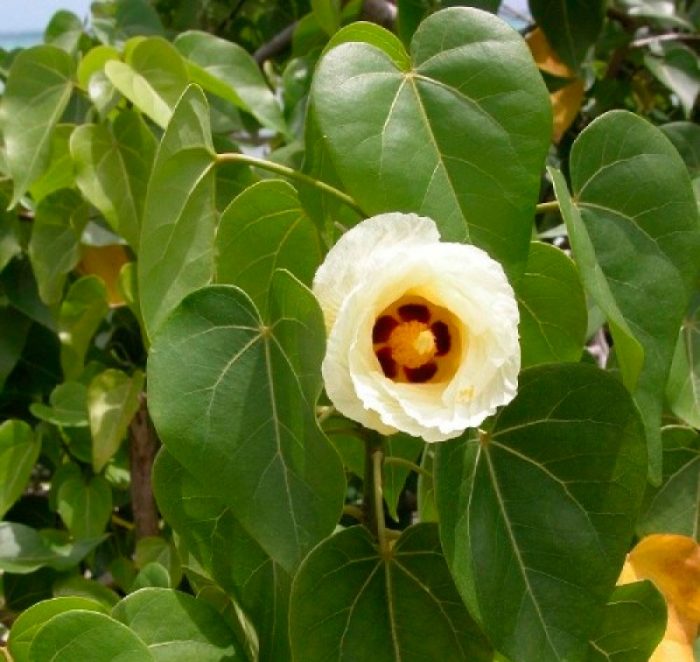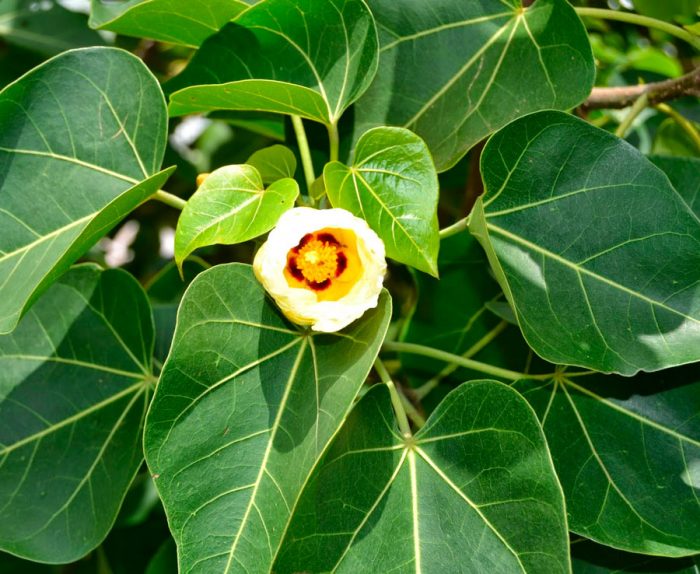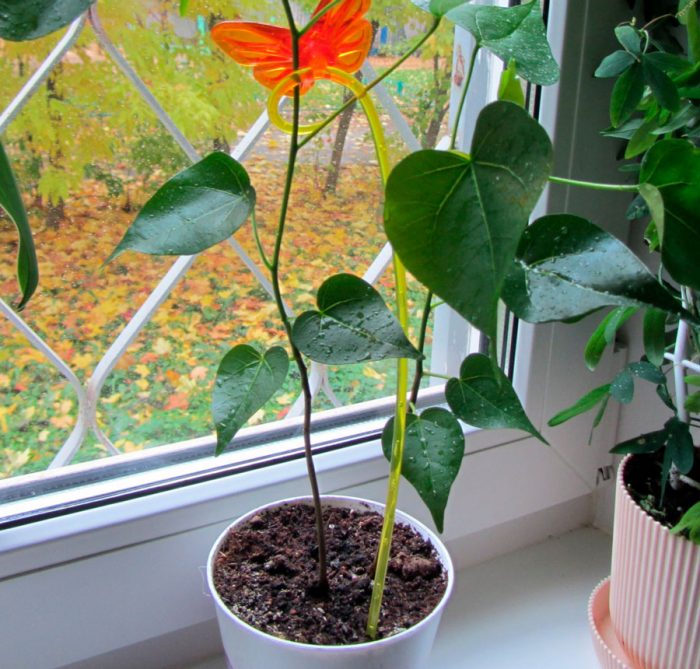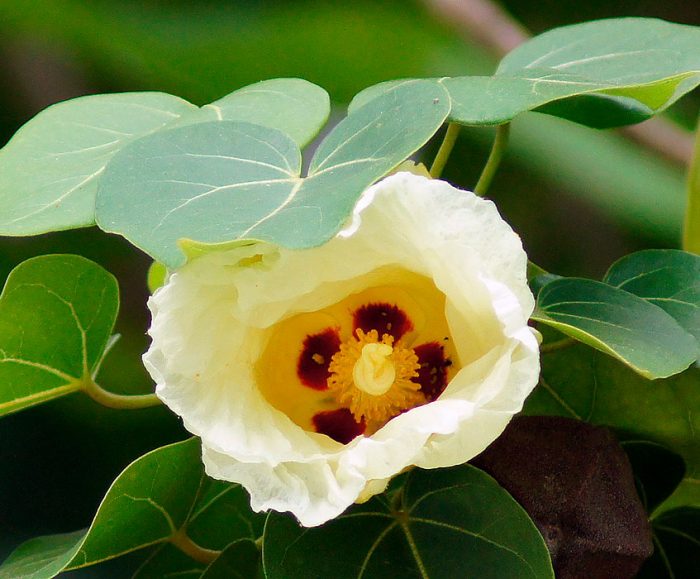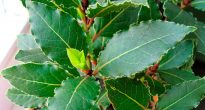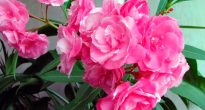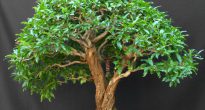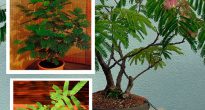Thespesia plant belongs to the Hibiscus or Malvaceae family. This culture is quite widespread in indoor floriculture. The plant is native to Hawaii and India, and it also grows on almost all the islands of the Pacific Ocean located in its southern part. Thesesia spread over the years. Now, in nature, it can be found in Africa, on the Caribbean islands, and a couple more species are found in China.
There are 17 types of thesesia in total. However, in indoor floriculture, only Sumatra thesis is grown. Such a perennial shrub in height can reach from 120 to 150 centimeters. It is characterized by an average growth rate. Bell-shaped flowers form on the bush throughout the year. Each individual flower lives for one to two days and then fades.
Content
Brief description of cultivation
In order for a room thesis to grow and develop within normal limits, as well as bloom magnificently, it needs special care and suitable conditions.
- Temperature... In the warm season - from 20 to 26 degrees, and in winter - from 18 to 26 degrees. It can withstand a short temperature drop of up to 2 degrees.
- Humidity... It needs high air humidity, so it is recommended to frequently moisten the bush from a sprayer with cool soft water.
- Illumination... Needs a lot of bright light, regularly should be in direct sunlight for several hours.
- Watering... The soil mixture should always be slightly damp, but do not let the liquid stagnate in the roots. In winter, the bush is watered less often.
- Substrate... A well-drained sandy soil with a pH of 6-7.4 is suitable.
- Fertilizer... Organic matter should be added to the substrate once every 4 weeks.
- Transfer... Bushes that are under 5 years old need an annual transplant. And more adults are transplanted 1 time in 2 or 3 years.
- Reproduction... By seed method and semi-lignified stem cuttings.
- Pruning... You need to trim and pinch regularly.
Home thesis care
Bloom
Home thesis blooms throughout the year. After opening, the flower remains effective for 1–2 days. Then he changes his color and dies off. Flowers of various colors can form on one bush.
Temperature
In spring and summer, the plant feels normal at a temperature of 18-26 degrees. At the same time, in the cold season, it is necessary to ensure that the room is no colder than 18 degrees. In indoor conditions, the plant can withstand a drop in air temperature up to 2 degrees, but only for a short time.
Humidity
It is necessary to moisten the foliage from the sprayer with well-settled soft water, the temperature of which should be close to room temperature. Thesesia should be sprayed 2 or 3 times a week, this is quite enough to make her feel comfortable.
Illumination
The best place for such a plant is considered to be a southwestern window sill. He also needs sunbathing: for this, the bush is placed in direct sunlight for several hours. In the event that the flower is on a south-facing windowsill, it will need a little shading.
Watering
For the normal development of thesis, it is necessary that the soil mixture in the pot is always slightly moist. However, liquid should not be allowed to stagnate in the root system. In summer, the substrate is moistened with cold water once every three or four days. In room thesis in winter, there is a dormant period, in this regard, at this time it is very rarely watered, while do not allow the clod of earth in the pot to dry out.
Pot selection
A young bush, until he is 6 years old, is transplanted once a year, each time replacing the pot with a larger one (20 mm larger in diameter). At its bottom, there must be drainage holes, this will ensure that excess liquid comes out.
Soil mixture
Particular attention should be paid to the choice of soil mixture for thesis. It must necessarily pass water and air well, and also be sandy. If you are using store-bought potting soil, mix it with perlite and sand (peat). The optimum pH of the substrate is 6–7.4.
Fertilizer
Experts advise feeding this shrub with organic fertilizer, which should be diluted. In this case, feeding is carried out only during the growing season (from April to October). You need to apply fertilizer to the substrate 1 time in 3 or 4 weeks, and this should be done in the morning.
Thesesia transplant
Every year in the spring, the thesis must be transplanted until she is six years old. At the same time, transplantation of adult bushes is carried out much less often - once every 3 or 4 years. At the bottom of the tank, a drainage layer should be made; for this, expanded clay, river pebbles, shards, etc. are suitable. Thanks to this, the root system will be protected from the development of rot.
Pruning
Room thesis requires regular crown shaping. During the year, do not forget to systematically pinch young shoots, as well as cut off those stems that are elongated.
Dormant period
Home-grown thehesia has a dormant period that begins in November and ends only in March. During this period, the bush is placed in a cooler place (about 18 degrees), watering is carried out more rarely and is not fed at all.
Propagation of thesis
Growing from seeds
If desired, thesis can be grown from seeds. To begin with, each seed must be carefully opened the shell, while the inner part should not be injured. Cover the seed with warm water and let it sit overnight. It is sown into a soil mixture consisting of peat and perlite. It is buried into the substrate to a depth of 2 seed heights. The first seedlings should appear after 15-30 days.
Cuttings
The harvesting of semi-lignified stem cuttings is carried out in the spring. They should be about 30 centimeters long. Tear off all sheet plates except 3 or 4 located at the very top. Treat the cut site with a root growth stimulator. For rooting, it is planted in an individual cup filled with a mixture of peat with perlite or moistened sand.
The handle is covered with polyethylene, after which it is transferred to a shaded and warm (about 22 degrees) place. After 4 weeks, it should be fully rooted.
Possible problems
When growing a thesis, a grower may experience the following difficulties:
- Faded foliage... The plant is cramped in the pot or it feels an acute lack of nutrients.
- Pulling the stems... The bush lacks light.
- Rot has appeared on the roots... Stagnation of liquid in the soil mixture.
- Foliage... It can be either a fungal disease or powdery mildew.
- Pests... Most often, spider mites, whiteflies, aphids, mealybugs, thrips and scale insects settle on the bush.
Types of thesis with photo
Thespesia populnea (Thespesia populnea)
In this evergreen plant, the stems can reach a length of about 300-600 cm. The dense heart-shaped leaf plates are pointed in the upper part. Cup-shaped flowers are colored orange-yellow, which eventually changes to pale red. The bush blooms throughout the year.
Thesesia Garkiana
The species can only be found in the wild in South Africa. It has a dense crown and fruits that can be eaten. Livestock is fed with rich green foliage.
Theesia grandiflorum
Such a tree-like shrub is found in nature only in Puerto Rico. Its height is about 20 m, while its wood is highly durable.
Beneficial features
Thesesia has been used by humans for a long time as a medicinal plant. From foliage or bark, tinctures and decoctions were prepared, which were used for skin rashes, eye diseases, and also for treating the oral cavity. Thesesia-based drugs effectively fight inflammation, pathogenic microorganisms, and also have an immunomodulatory effect.
The wood color of large species of this plant is dark red, which looks very impressive. That is why it is very popular with artisans who make various souvenirs and crafts from it.

